One of the most common pests at the apiary is wax moth. It is the greatest problem of beekeepers, as the breakdown eats, honeycomb in the larvae state. In addition, this pest is also dangerous with its livelihoods that have a certain degree of toxicity for bees. Their sharp specific smell is able to break the process of molting bees, delaying their development. Under the influence of harmful toxic vapors, the process of vital activity of the bee larvae is violated. The breakdown is deformed, reborn into the spongy, tubular, humpback form, which greatly affects the performance of bees. And the most terrible harm to this parasite is the fact that due to its disastrous actions, the bee uterus and the swarm leave the hive, unsuitable for further livelihoods. About what wax moth is and how to get rid of it - further in the article.
Characteristic of the pest
Wax Mole (Galleria Mellonella) has several more names that are among the beekeepers, it is "Beeshe's fire", "big fire", "small mole", "wax fire."
There are two varieties of pests:
- Large wax moth. It has a dark ash color. Its larvae reaches large sizes - 3-5 cm long.
- Small mole. The color of such a parasite is yellow. The larvae of wax moths of this type is small worms, the length of which does not exceed 2 cm.
The main nutrition of the moth larvae is wax. Moreover, they try to eat the youngest, rich in vitamins and cell minerals, than very harm the quality of the future product. They live in the hives. Fly predominantly in the night and evening day. In the afternoon of such a pest, it is impossible to meet. Wallows mole in a hive through a hole for bees or through other existing gaps.
Puts eggs the parasite mainly in the corners and slots of the hive. According to its sizes, the testicles of moths are somewhat higher than bee. Over time, worms of moths are derived from eggs. The larvae grow very quickly under the influence of warm conditions available in the ule. Large pieces of moths are built for mink worms, the entrance to which is overlapped with clusters of cobwebs. Therefore, bees can not get to them and damage. The pest dwells only in the warm season, in winter, mole dies. However, pending eggs can wait for the winter, of which the larvae of the parasite will be taken over time.
A strong bee family is able to independently cope with the influx of this parasite. Healthy and strong bees do not let mole in the hive, throw out the outward eggs and larvae of parasites. However, the weak family with such a problem will not be able to cope. In favorable conditions, the nest of wax moth quickly grow up until the entire skid fill. As a result, as mentioned above, the bee uterus and the swarm leave the hive.
Signs of damage to pest
Between the perga and breakdown, Mol often places their moves and holes. Around them all envelops the web. As a result, young bees cannot free themselves from cells. Strong individuals squander honeycombs in order to get to the breakage, and free it. However, the legs and wings of the broken bees still remain hung off by the web, as a result of which they cannot fly and die over time. Therefore, in the hives infected with wax mol, you can often find many dead young bees.
In addition, the main signs of lesion of the beehive parasites are the following factors:
- The performance of bees is reduced.
- The individuals often do not go to the collection of nectar, and sit on the edges of the flyer.
- At the bottom of the hive, it is often possible to detect small worms.
- In the compartments there is a moth's litter, somewhat resembling the shape and color of the seeds of the bow.
- The legs and wings of some bees are shrouded in a web, as a result of which they stop flying, and are in compartments at the bottom of the hive.
- If you bring a smoked match for the pilot and then shake the hive, small moth larvae can be saturated from it.
- If the hive is collapsible, then it will not hope to find the clusters of the web between the cells, in which the mole nests.
Causes of lesions of Ulya
There are the following factors that can provoke parasites infection:
- A weak family of bees, which is not able to protect themselves and clean the hive from pests.
- Increased humidity inside the hive.
- High humidity in the region where the apiary is located.
- The family remained without a uterus. Typically, in such cases, the bees do not adhere to the order, do not purify the hive independently, many perme accumulates.
- Dirty honeycombs. Bees are not always brushing them on their own, namely here it loves to nest mole.
- Too high temperature in the wintering. Under such conditions, Mol is good.
- The accumulation of dead bees in the compartments. Usually the butters must be cleaned in a timely manner, but if this does not happen, the moth larvae are harvested in cells and compartments.
Fighting wax mole
Rescue of bee family
Beehives need timely cleaning, sweeping. If the parasite larvae was found in Perga during cleaning, then cleaning events should be made daily 2 times - in the morning and in the evening. If after 3-4 days you will see that the bees continue to throw out the larvae of the fire from the fly, then, it means that Mol has already managed to equip the nest. In this case, you should remove all cells, honeycombs and compartments from the hive and clean them thoroughly. Between the cells you will see the clusters of the web, this is the nest of moths. It must be thrown out of the hive, and the place where it was located, fit well.
If the hive has a moving design, and the defeat of the parasite has already achieved a high degree, then it should be moved, and instead, put a new clean compartment in which one pure hundred honey should be placed. Play the uterus here. Thus, the bee family will gradually move in a clean place. Only in no case take the honeycomb from the old hive. No matter how pre-purified it, it can still contain the testicles and larvae of moths, as a result of which the parasite can infect the bee family again. After you moved the family, you need to process the old hive smoke or burn the fire of the cluster of the fire. Fire and smoke can destroy the larvae and the germs of the parasite.
If the degree of damage to the pest is not so large, then you can not move the family completely, and it should be simply shortened by 4-6 hundred. Next, all cells, compartments and cells thoroughly clean. As a result, a strong bee family will be able to cope with the remains of parasites.
Cleaning and security
Cleaning of cells:
- Infected honeycomb, extracted from the hive, should be carefully cleaned from the larvae of the parasite. This is done with hot water (boiling water).
- If there are no moisters on the honeycomb, then it is possible to displaced them with the following way. So, you need to immerse them into a container with water and press something heavy so that they do not flood to the surface.
- After 2-3 days, the parasite larva will pop up to the surface.
- Next honeycombs are taken from water tank and placed in a wet form in the compartment with strong bees.
- Strong individuals will be able to finish their cleaning work independently, they will remove the water remnants and will not allow parasites penetration. However, consider such cells in no case cannot be placed in the compartment with weak bees, as they can become infected.
Prevention methods:
- Honeycombs that are extracted from the hive should be stored in a cold place, and not warm. It is best if it is a cold attic that is blown away by the wind.
- It is possible to disinfect and prevent cell infection as follows. The cells are placed in tightly sealed containers, on the bottom of which a saucer with acetic essence or acid is installed. 200 ml of solution for 10 frames is required. In the spring, when the honeycombs are getting out of such tanks, they need to be able to ventively, so that the smell of vinegar is released, then the bees will be able to take them in their ulle. This method of prevention is good not only as protection against moth, but also in order to protect honeycombs from the lesion by ticks.
- You can store honeycombs in a tightly knit bag so that the air does not flow there. Such tight storage will prevent parasite penetration into them.
Folk Methods
You can handle the affected honeycombs:
- Grilled beam of hay or hot solder lamp. Moth larvae afraid of high temperatures.
- Chemicals, such as acetic or formic acid.
- Sulfur gas. It is unsafe, but an effective way.
Folk recipes, allowing to get rid of moth larvae, in this case the following:
- Parasites are afraid of strong and sharp odors, so you can get rid of the larvae with the help of mint-sheets of fragrant and peppers, hops, nuts, wormwood.
- To eliminate the embryos of moths, more garlic, elderberry, crusts of fresh orange are suitable. They similarly have a strong and sharp smell that do not have to moral the pests of the apiary.
- After it got and cleaned cells, treat them with a concentrated salt solution. It can be pouring into the usual OSO-5 sprayer. This method helps in the fight against the larvae of moths and the colorado beetle.
- For the prevention of the impact of the larvae of the fire for honeycomb, cover them with the bottom of the immorter with the leaves. It makes a specific smell that will scare parasites.
- At the bottom of the hive, you can place the container in which 60-100 ml of acetic acid is located. The design ceiling is recommended to cover with a layer of polyethylene to slow down the evaporation of the solution.
- As mentioned above, the larvae moth are afraid of cold and wind. Therefore, you can place honeycombs on drafts on the open area. Each hundred is placed at some distance from each other.
- You can still process compartments and cells with a weak solution of formalin. This prevents the reproduction of parasites at the embryo stage or larvae.

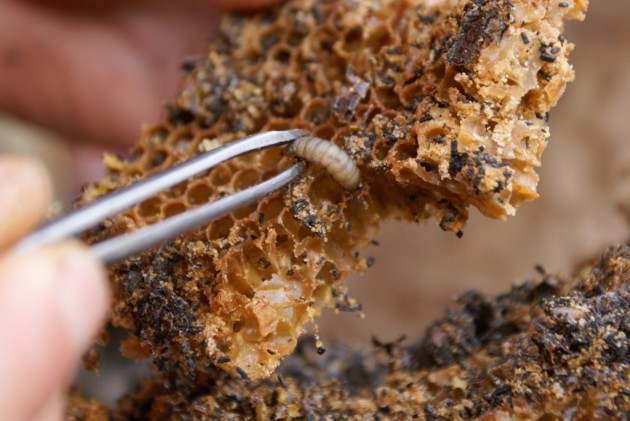
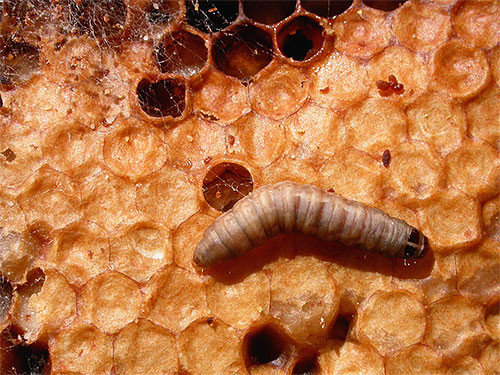
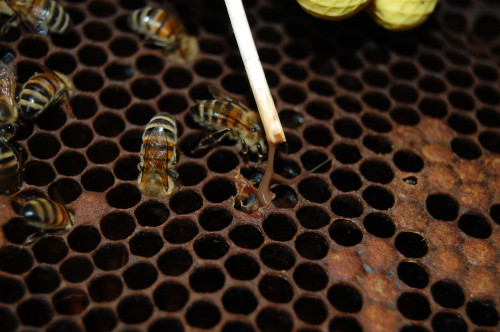
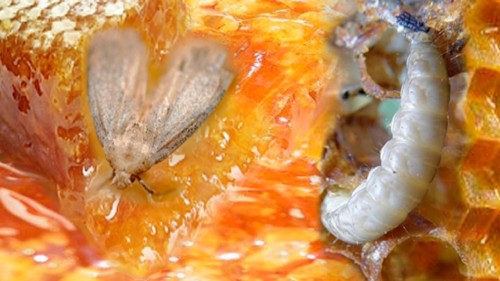
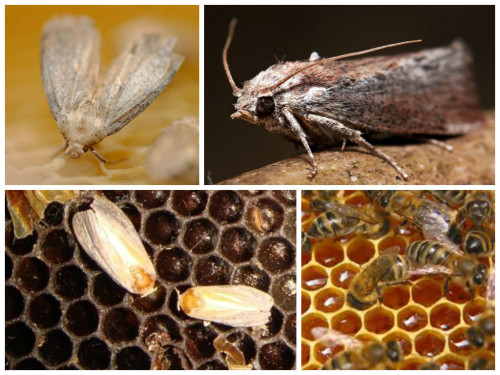
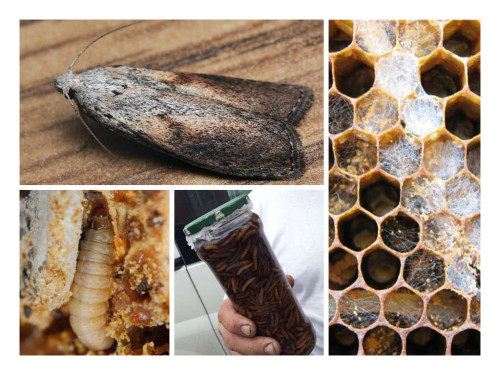


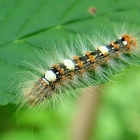
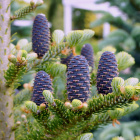






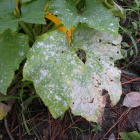
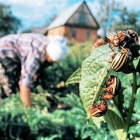
 Start a discussion ...
Start a discussion ...